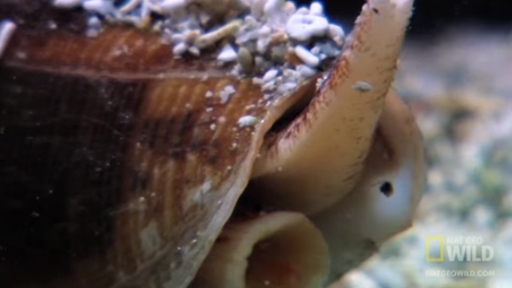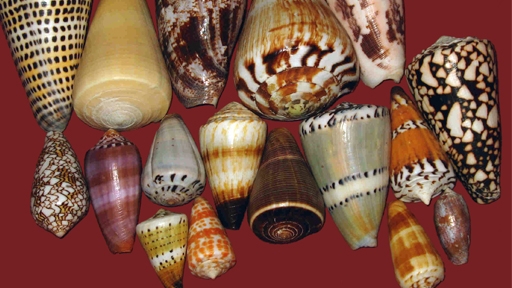
These shells may look pretty, but you definitely don’t want to pick one up.
Carnivorous cone snails are slow-moving creatures, so they’ve evolved a highly toxic venomous sting that paralyzes its prey instantly. Otherwise, the prey would swim away to die (and no one would benefit).

The venom is delivered through a harpoon-like “tooth” that is propelled by an extendable organ. There is no known antivenin for the sting, and the only medical treatment is to keep the patient alive long enough for the venom to wear off.
The smaller species may only deliver a sting comparable to a bee or hornet, but the larger fish-eating snails can easily kill a human.

Interestingly enough, proteins found in the venom have been found to have pain-killing properties.
According to National Geographic, “Research shows that certain of these proteins target specific human pain receptors and can be up to 10,000 times more potent than morphine without morphine’s addictive properties and side-effects.”

Cone snails are most commonly found in the Indo-Pacific region, but they thrive all over the world. Many are found in coral reefs or in shallow rocky intertidal zones.
Their shells are long and cone-shaped, hence the name. They come in all sizes and colors, and often have elaborate patterns on their shells which makes them attractive to collectors.
The shells are notable as they display The cone snail a cellular automaton pattern on its shell. Specifically, the shell displays a natural formation of Wolfram’s Rule 30, displaying aperiodic, chaotic behavior. This rule is of particular interest because it produces complex, seemingly random patterns from simple, well-defined rules.

However, we recommend that you admire them from a distance.




